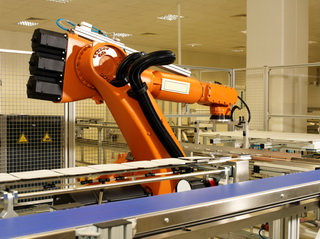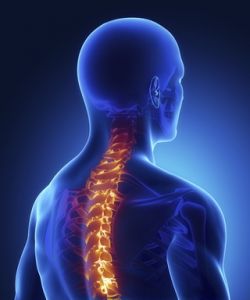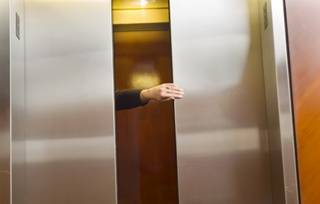 Industrial robots are used for material handling, automated assembly, and other labor-replacing tasks in such manufacturing settings as semiconductor, electronics, telecommunications, pharmaceutical, food processing and automotive industries.
Industrial robots are used for material handling, automated assembly, and other labor-replacing tasks in such manufacturing settings as semiconductor, electronics, telecommunications, pharmaceutical, food processing and automotive industries.
Today, many manufacturers use multifunctional manipulators (industrial robots) instead of humans to perform unsafe, hazardous, repetitive tasks with a high degree of accuracy. However, human interaction is unavoidable for some tasks and, on occasion, these programmable, mechanical robots injure workers.
Safety in terms of industrial robots usually consists of isolating the workspace of the manipulator from workers by a safety guard with locked safety doors or light barriers. Once the safety door is opened or the light barrier is crossed, the robot is stopped immediately. However, workers must enter the robot’s working area, exposing him/her to risk and can suffer injuries while programming, maintaining, setting up, or adjusting the industrial robots. The ANSI standard assigns responsibility for industrial robot safety to manufacturers, integrators, installers and the user.
For example, while working on a robot-conveyor arm, a technician forgot the transfer system cycled periodically. Since the technician had not turned-off the transfer system, it pinned him between the robot arm and conveyor. Many other workers shut down a portion of the machine while trying to clear a jam; however, if the entire machine system is not equipped with a lockout, someone else can restart the system. When the jam clears, the robot can cycle and may cause severe crushing injuries.
We have seen developments in robotic safety in the area of safe motion technology which creates safety zones for different operational and maintenance situations. Also, CED believes employers must (1) supply adequate training and implement safe work practices, (2) ensure guards and other safety systems remain in place and are not bypassed, and (3) install signs, audible horns and/or visible lights as warning devices to make people aware of hazards so they can avoid accidents (4) perform risk assessments on their robotic systems. Employees need to (1) keep guards and safety mechanisms in place, (2) follow safe work practices, and (3) keep their focus on the task at hand.
In spite of safety measures and innovations, accidents still occur on occasion. When this happens, CED can help. We not only understand robotic standards, safety and warning issues but have engineers on staff that helped develop safety standards for Manufacturing Systems /Cells – which include industrial robots. Please call us today at 800.780.4221 to discuss a possible case.






